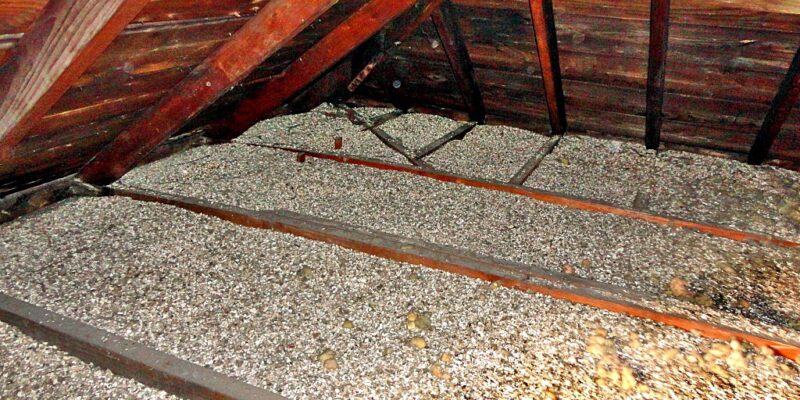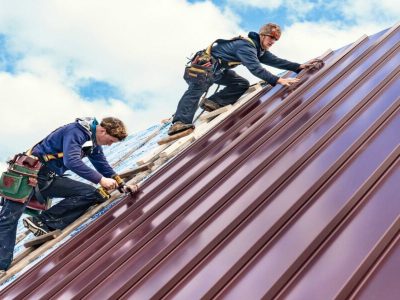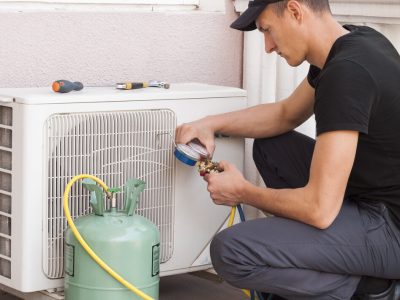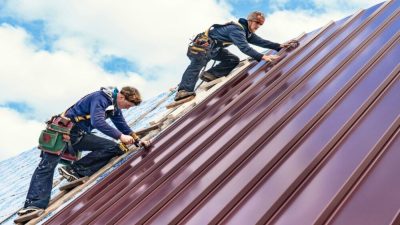Health Risks Associated with Asbestos Exposure
Asbestos is a naturally occurring mineral that was once widely used in construction and various products due to its heat-resistant properties. However, its health risks are now well-known. When asbestos fibers become airborne and are inhaled, they can cause serious health issues. These include mesothelioma, lung cancer, and asbestosis. The fibers, once lodged in the lung tissue, can lead to scarring and inflammation, which over time, compromises lung function. It’s important to note that there is no safe level of asbestos exposure, and even short-term contact can elevate the risk of developing cancers, although the risk is generally lower unless the exposure is intense.
Long-Term Effects on Respiratory Health
The long-term effects of asbestos exposure can be devastating. Asbestos-related diseases often have a latency period of 10 to 50 years, meaning symptoms may not appear until decades after exposure. This delayed onset can result in diseases being diagnosed at an advanced stage, making them difficult to treat. Conditions like asbestosis lead to progressive lung damage, causing symptoms such as difficulty breathing, persistent cough, and chest pain. Unfortunately, by the time these symptoms appear, the disease has often progressed significantly.
Regulatory Standards for Asbestos Management
Due to the severe health risks associated with asbestos, various regulatory bodies have established stringent standards for its management. In the United States, the Environmental Protection Agency (EPA), Occupational Safety and Health Administration (OSHA), and Centers for Disease Control (CDC) have all categorized asbestos as a toxic substance. These agencies enforce regulations that require strict control measures during the handling, removal, and disposal of asbestos-containing materials. Compliance with these regulations is crucial to minimize exposure risks and protect public health.
Identifying Sources of Asbestos in the Home
Common Household Materials Containing Asbestos
Homes built before the 1980s can be a haven for asbestos, lurking in places you might not expect. Asbestos was commonly used in construction materials due to its heat-resistant properties. You might find it in cement, floor tiles, insulation, walls, and even pipes. These materials, when disturbed, can release asbestos fibers into the air, posing a health risk. It’s crucial to know where asbestos might be hiding to protect yourself and your family.
How to Recognize Asbestos-Containing Products
Identifying asbestos isn’t always straightforward. Many products that contain asbestos look the same as those that don’t. Here are a few tips to help spot potential asbestos-containing materials:
- Check the age of the building: Older homes, especially those built before the 1980s, are more likely to contain asbestos.
- Look for labels: Some products may have labels indicating they contain asbestos, although this isn’t always the case.
- Consult renovation records: If your home has been renovated, check any records for mentions of asbestos.
The Role of Professional Inspections
When in doubt, calling in a professional is the best course of action. Certified inspectors have the tools and knowledge to safely identify asbestos in your home. They can conduct a thorough inspection and even take samples for laboratory analysis. This is especially important if you’re planning renovations, as disturbing asbestos-containing materials can release dangerous fibers into the air. Remember, safety should always come first when dealing with asbestos.
Implementing Effective Dust Control Measures
Using Atomized Mist Technology
When it comes to controlling asbestos dust, atomized mist technology stands out as a highly effective method. These systems release a fine mist that captures dust particles, preventing them from becoming airborne. The mist droplets are small enough to bond with the dust particles, pulling them to the ground. This technique is particularly useful in demolition and construction sites where dust levels can be high. Using mist cannons, such as those from DustBoss, can significantly reduce the risk of asbestos exposure in both indoor and outdoor settings.
Sealing and Containment Strategies
To minimize the spread of asbestos dust, sealing and containment are critical. This involves covering surfaces and materials that may release asbestos fibers. Plastic sheeting is often used to create barriers, confining dust to a specific area. Additionally, sealing off work areas with enclosures can prevent dust from spreading to other parts of a building. These strategies are essential during renovation projects where asbestos-containing materials might be disturbed.
Personal Protective Equipment (PPE)
Wearing the right Personal Protective Equipment (PPE) is vital for anyone working in environments where asbestos dust might be present. This includes respirators, protective suits, and eye protection. PPE acts as a last line of defense against inhaling dangerous fibers. It’s important that all personnel are properly trained in the use and maintenance of their equipment to ensure maximum protection. Regular checks and maintenance of PPE are necessary to keep them in good working condition.
Implementing these effective dust control tactics is essential for mitigating project risks associated with asbestos. Regular cleaning and debris removal are also crucial for minimizing airborne dust, as noted in construction site management. By combining these methods, you can create a safer environment for both workers and residents.
Safe Practices for Handling Asbestos Materials
Guidelines for DIY Asbestos Removal
Removing asbestos on your own is risky and not recommended unless you’re fully informed about the dangers. It’s crucial to understand that even a small amount of asbestos dust can pose serious health risks. If you decide to proceed, ensure you follow these steps:
- Wear appropriate personal protective equipment (PPE), such as disposable coveralls, gloves, and a high-quality respirator.
- Wet the asbestos material thoroughly before attempting to remove it. This helps to minimize the release of fibers into the air.
- Seal the removed asbestos in leak-proof containers, clearly labeled for disposal.
Hiring Certified Asbestos Abatement Professionals
For most people, hiring a professional is the safest option. Certified asbestos abatement professionals have the expertise and equipment to handle asbestos safely. They follow strict regulations to ensure the asbestos is removed without contaminating your home or the environment. When selecting a contractor, verify their credentials and ask for references to ensure they are reputable.
Legal Requirements for Asbestos Disposal
Disposing of asbestos isn’t as simple as throwing it in the trash. There are legal requirements to follow. Asbestos waste must be taken to a designated disposal site that is equipped to handle hazardous materials. Check with your local waste management authorities for specific guidelines. Failure to comply with these regulations can result in hefty fines and pose health risks to others.
Preventing Asbestos Dust During Renovations
Pre-Renovation Asbestos Testing
Before diving into any renovation project, it’s crucial to conduct thorough asbestos testing. This involves hiring a certified professional to inspect the property for any materials that might contain asbestos. Testing helps identify the presence of asbestos, ensuring that the renovation process doesn’t inadvertently release harmful fibers into the air. Homeowners should prioritize this step to safeguard their health and that of their neighbors.
Safe Demolition Techniques
Demolition is a significant phase where asbestos fibers can become airborne. To mitigate this risk, contractors should employ safe demolition techniques. This includes using wet methods to suppress dust, avoiding cutting or breaking materials that might contain asbestos, and sealing off the work area to prevent the spread of dust. Additionally, using PPE, such as N-100 or P-100 respirators, is essential for workers involved in the demolition process.
Post-Renovation Cleaning and Inspection
Once the renovation is complete, a meticulous cleaning and inspection process is necessary. This ensures that no asbestos fibers remain in the air or on surfaces. It’s advisable to use specialized cleaning equipment designed to capture and remove asbestos particles. After cleaning, a final inspection by a professional should confirm that the area is safe and free from asbestos contamination. This step is vital to ensure the long-term safety of the living environment.
The Role of Air Quality Monitoring in Asbestos Control
Types of Air Quality Monitoring Devices
Air quality monitoring is a critical part of managing asbestos risks. Various devices are used to detect asbestos fibers in the air, each with its own strengths and applications. Personal air sampling pumps are often used for individual assessments, collecting air samples over a set period. These samples are then analyzed in a laboratory to determine the concentration of asbestos fibers. For more immediate results, real-time monitoring devices can provide instant feedback on air quality, allowing for quick action if asbestos levels are high. These devices are particularly useful during air monitoring during asbestos removal to protect workers and residents.
Interpreting Air Quality Data
Understanding the data from air quality monitors is essential for maintaining a safe environment. The data typically includes the concentration of asbestos fibers, which is measured in fibers per cubic centimeter (f/cc). Regulatory agencies have established permissible exposure limits (PELs) to ensure safety, and it’s critical to compare monitoring data against these standards. If the levels exceed the PELs, immediate action is required, such as evacuating the area and employing additional dust suppression measures. After-survey actions for asbestos air monitoring are key to maintaining compliance and ensuring safety.
Continuous Monitoring for Long-Term Safety
Continuous air quality monitoring offers a proactive approach to asbestos management. By keeping a constant check on air quality, potential asbestos exposure can be identified and addressed promptly, reducing health risks. This ongoing surveillance is particularly important in areas with known asbestos presence, such as older buildings or during renovation projects. Not only does it help in maintaining a safe environment, but it also aids in early detection of any asbestos disturbances, ensuring that corrective measures are implemented swiftly.
Educating Homeowners on Asbestos Risks
Community Awareness Programs
Raising awareness about asbestos is a community effort. Local governments and organizations can play a pivotal role in educating homeowners about the risks associated with asbestos. Community awareness programs can include informational seminars, distribution of educational materials, and public service announcements. These initiatives aim to inform the public about the dangers of asbestos exposure and the importance of proper management.
Resources for Homeowners
Homeowners need access to reliable resources to understand and manage asbestos risks effectively. The EPA asbestos site is a valuable resource, offering essential information about asbestos sources, exposure risks, and health effects. Additionally, homeowners should be provided with guides on identifying asbestos-containing materials and steps to take if asbestos is suspected in their homes.
Workshops and Training Sessions
Hands-on workshops and training sessions can significantly enhance a homeowner’s ability to manage asbestos risks. These sessions can cover topics such as identifying asbestos-containing materials, proper handling techniques, and understanding legal obligations. By participating in these workshops, homeowners can gain practical knowledge and confidence in managing asbestos safely.
Innovations in Asbestos Dust Suppression
Advancements in Mist Cannon Technology
In recent years, mist cannon technology has seen significant advancements, particularly in its ability to control asbestos dust at the source. These devices, like the DustBoss DB-60 Surge, are designed to emit fine atomized mist that captures airborne asbestos particles before they can spread. This technology is particularly effective because the mist droplets are small enough to bond with the tiny asbestos fibers, pulling them down to the ground. This method has proven to be a game-changer in both indoor and outdoor environments, including demolition sites and quarries.
Integration of Smart Home Systems
The integration of smart home systems into asbestos dust suppression is an emerging trend. These systems can be programmed to activate misting devices automatically when dust levels reach a certain threshold, ensuring continuous protection without manual intervention. Such automation not only enhances safety but also ensures compliance with environmental standards. Homeowners can monitor air quality in real-time and receive alerts if asbestos levels become hazardous, making it easier to maintain a safe living environment.
Future Trends in Dust Control
Looking ahead, the future of asbestos dust suppression will likely include more sophisticated technologies. Innovations could involve drones equipped with sensors and misting capabilities to target specific areas with precision. Additionally, there might be developments in biodegradable misting solutions that minimize environmental impact while effectively controlling dust. As technology progresses, the goal will be to create systems that are not only effective but also sustainable and user-friendly, addressing both health and environmental concerns.
For those in the civil construction industry, these innovations are crucial in meeting safety and regulatory standards, ensuring that both workers and the environment are protected from the dangers of asbestos exposure.
Legal and Financial Implications of Asbestos Management
Understanding Liability and Insurance
When dealing with asbestos, understanding liability is key. Asbestos exposure can lead to severe health issues, and companies can be held liable if they fail to manage asbestos properly. Liability varies by state, which affects how cases are pursued and the potential outcomes for victims. In general, asbestos lawsuits typically follow three legal theories: negligence, strict liability, and breach of warranty. It’s crucial for businesses to have comprehensive insurance policies that cover asbestos-related claims. This not only protects the company but also ensures that victims receive the compensation they deserve.
Cost of Asbestos Abatement
The financial burden of asbestos abatement can be significant. Abatement involves the removal, encapsulation, or enclosure of asbestos materials, and each method has its own costs. Here’s a breakdown of typical expenses:
- Inspection and Testing: Before any abatement work begins, a thorough inspection is needed, which can cost between $200 and $800 depending on the size of the property.
- Removal Costs: Professional removal can range from $20 to $65 per square foot, depending on the complexity of the job.
- Disposal Fees: Proper disposal of asbestos materials is crucial and can add a few hundred to several thousand dollars to the overall cost.
While these costs are substantial, they are necessary to ensure safety and compliance with regulations.
Government Assistance Programs
For those struggling with the financial implications of asbestos management, government assistance programs can provide some relief. Several federal and state programs offer grants or low-interest loans to help cover the costs of asbestos abatement. Additionally, some programs provide funding for air quality monitoring and health screenings for those affected by asbestos exposure. It’s important for homeowners and businesses to explore these options to alleviate the financial burden of managing asbestos.
Maintaining a Safe Living Environment
Regular Home Inspections
Keeping your home safe from asbestos involves regular inspections. Regular checks can catch potential asbestos issues before they become serious problems. Homeowners should schedule inspections with a certified professional who can identify asbestos-containing materials. Look for signs of wear or damage in materials like insulation, floor tiles, and roofing shingles. It’s crucial to address any damage promptly to prevent asbestos fibers from becoming airborne.
Updating Safety Protocols
Safety protocols in the home should be updated regularly to reflect the latest guidelines and technologies for asbestos management. This includes understanding the proper use of personal protective equipment (PPE) and containment methods during renovations or repairs. Homeowners should familiarize themselves with local regulations and best practices for handling asbestos safely. Implementing these protocols helps minimize exposure risks for everyone in the household.
Emergency Response Plans
Having an emergency response plan is essential in case of accidental asbestos disturbance. This plan should include steps to safely evacuate the area and contact professionals for assessment and cleanup. Train family members on recognizing potential asbestos hazards and responding appropriately. An effective response plan ensures that any asbestos-related incidents are managed swiftly and safely, reducing the risk of exposure.
Remember, when planning home renovations that may involve asbestos, it is crucial to wear appropriate protective equipment and utilize approved containment methods to minimize exposure and prevent the spread of asbestos fibers.













Comments